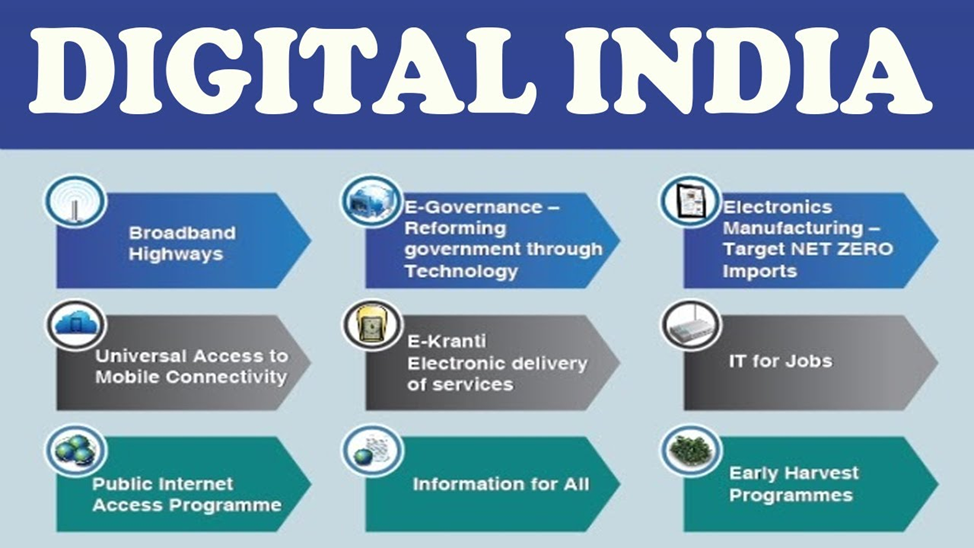In recent years, India has embarked on an ambitious journey towards digital governance, aiming to enhance citizen services and improve the efficiency of government employees. This transformation underscores a critical reality: the success of public service delivery is inherently tied to the skills and capabilities of the workforce behind it. Despite significant strides, key questions remain: What more can be done to fully realize the potential of this digital shift?
The Foundations of Digital Governance
Governance is a multifaceted process involving diverse stakeholders, including government bodies, non-governmental organizations, local community leaders, and citizens. Chanakya’s governance principles, articulated in the Arthashastra, have profoundly influenced South Asian governance, emphasizing statecraft, economic policy, and ethical leadership. In the contemporary context, integrating digital tools has become essential for reimagining governance structures at all levels. Capacity building for participants in governance is crucial to leveraging these tools effectively.
Capacity Building in Digital Governance
Digital governance marks a paradigm shift in how government employees and intermediaries, such as contractors, engage with their responsibilities. The integration of technology facilitates improved communication, informed decision-making, and streamlined workflows. As public expectations evolve, so must the skill sets of those in governance roles.
Key initiatives include:
1. iGOT Karmayogi Platform: Launched in 2020, this online training portal equips government officials with essential skills in data analytics, public administration, and digital technologies. Personalized learning paths foster continuous improvement, crucial in an era defined by adaptability.
2. e-Office Initiative: This initiative digitizes government workflows, significantly reducing reliance on paperwork and enhancing operational efficiency. Automation in file management, workflows, and grievance redress promotes real-time communication and transparency.
3. Government e-Marketplace (GeM): The digitization of procurement processes through platforms like GeM ensures efficiency and accountability.
4. Digital Literacy Programs: Various government programs aim to familiarize employees with e-governance tools, cybersecurity, and digital communication.
Challenges in Digital Governance
Despite these advancements, numerous challenges hinder the successful implementation of e-Governance in India. These can be categorized as follows:
1. Digital Infrastructure:
o Limited Broadband Connectivity: Many rural and remote areas still lack high-speed internet access, affecting consistent e-governance services.
o Power Supply Issues: Frequent power outages and unreliable electricity in rural areas disrupt the functionality of digital infrastructure.
2. Interoperability:
o Fragmented Systems: Different government departments use legacy systems that are not always compatible, hindering seamless data sharing and coordination.
o Integration with Legacy Systems: Upgrading and integrating old systems with modern technologies is both complex and costly.
3. Data Security and Privacy:
o Cybersecurity Threats: Increased digitization heightens the risk of cyberattacks and data breaches. Robust cybersecurity measures are essential.
o Data Privacy Concerns: The absence of a comprehensive data protection law raises significant concerns about safeguarding personal data.
4. Digital Literacy:
o Low Literacy Rates and Digital Divide: NSSO data shows 24% of rural households have internet access, compared to 66% in urban areas. NFHS-5 reveals that rural men are nearly twice as likely as women to use the internet (49% vs 25%).
o The GSMA Mobile Gender Gap Report 2024 highlights that women in India are 11% less likely to own a mobile phone and 40% less likely to use the internet, with only 33% aware of mobile internet.
o Lack of Trained Government Employees: Ensuring all government employees are proficient in managing e-governance platforms is a continuous challenge.
5. Technical Support and Maintenance:
o Inadequate Technical Support: Skilled personnel for maintaining and troubleshooting e-governance systems are lacking in many regions.
o Scalability Issues: As user bases grow, systems must scale without performance degradation.
6. Cost and Funding:
o High Implementation Costs: Establishing digital infrastructure, maintaining systems, and training personnel require substantial investment.
o Cost of Advanced Technologies: Cutting-edge technologies like AI and blockchain are expensive to deploy at scale.
7. User Accessibility and Inclusivity:
o Language Barriers: India’s linguistic diversity necessitates e-governance services in multiple languages.
o Accessibility for Differently-Abled Individuals: Ensuring inclusivity for differently-abled users requires additional technical considerations.
Recommendations for Overcoming Challenges
The 2nd Administrative Reforms Commission (ARC) has made key recommendations for addressing these challenges:
· Building a Congenial Environment:
o Creating willingness for change within the government.
o Providing political support at the highest levels.
o Incentivizing e-Governance initiatives.
o Raising public awareness to generate demand for change.
· Business Process Re-engineering: Redesigning governmental processes and structures to align with e-Governance needs, supported by procedural, institutional, and legal changes.
· Developing Technological Solutions: Creating a national e-Governance enterprise architecture to standardize and optimize digital governance frameworks.
· Monitoring and Evaluation: Ensuring continuous monitoring of e-governance projects by the implementing organizations.
· Public-Private Partnerships (PPP): Leveraging PPP modes for various components of e-Governance projects.
· Protecting Critical Information Infrastructure: Developing strategies to secure critical infrastructure, supplemented by improved threat analysis and information sharing.
· Capacity Building and Knowledge Management: Establishing systems for knowledge management and skill development to strengthen governance initiatives.
The Way Forward
India’s digital governance initiatives have set a robust foundation, but much remains to be done to harness the full potential of this transformation. Key recommendations include:
1. Infrastructure Development: Strengthening digital infrastructure, particularly in rural areas, to bridge the digital divide.
2. Dynamic Training Programs: Designing adaptive training modules to keep pace with technological advancements.
3. Incentive Structures: Implementing mechanisms to reward innovation and successful adoption of digital tools.
4. Inclusive Policies: Ensuring accessibility for all citizens, including the differently-abled and linguistically diverse populations.
With robust infrastructure, continuous capacity building, and inclusive policies, India can establish a global benchmark for digital governance, achieving a model that is accountable, transparent, and inclusive for all.
| Main question: Digital governance has the potential to transform public service delivery in India. Analyze the challenges and provide recommendations to overcome them. |









